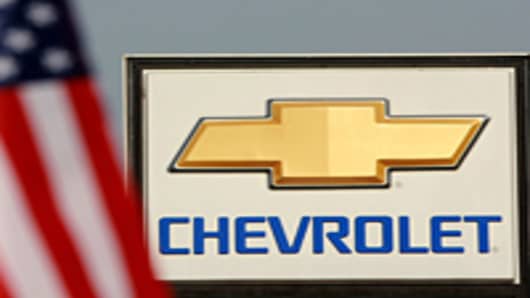A funny thing is happening on the way to the IPO of the new General Motors. Some prominent pundits have risen to say that the old GM, the one that went bankrupt last year, wasn’t so bad after all.
One is Malcolm Gladwell, writing in The New Yorker. The other is The Wall Street Journal’s Holman Jenkins.
Both often take contrarian positions, a venerable journalistic tradition. At least until logic gets twisted into an intellectual pretzel, which is what’s happening here.
Mr. Gladwell argues that the new GM is making money only because huge swathes of debt were washed away in a government-sponsored bankruptcy. Heck, even a caveman could do it.
Mr. Jenkins states that the plunge in GM’s market value from a near record to nearly zero under former CEO Rick Wagoner means little. Stock price isn’t the only measure of a CEO’s performance, he maintains, while arguing that Mr. Wagoner was dealt a bad hand and did more than anyone to address GM’s structural problems.
But Mr. Wagoner didn’t think he had a bad hand, if his public statements can be believed. In the summer of 2000, shortly after becoming CEO, he told analysts: “Our position around the globe is enviable.”
No CEO (or anybody else) is dealt a perfect hand. But chief executives get more pay and privileges than the rest of us because they’re supposed to anticipate and solve problems. If they don’t, they get held accountable.
One might ask President Barack Obama about this. He inherited from his predecessor a disastrous economy, certainly a far worse situation than Mr. Wagoner faced when he took the helm at GM.
The president’s “solutions” were an ill-timed and ill-conceived government takeover of health care, a trillion-dollar stimulus bill larded with pork and a 2,000-page financial “reform” bill that somehow left out the words “Freddie” and “Fannie.” Mr. Obama’s stock has plunged as a result.
Perhaps Mr. Wagoner’s biggest achievement was to end the blank check for employee and retiree health care. In September 2007 he convinced the United Auto Workers union to accept a “VEBA” trust that’s funded by the company with fixed contributions, and disburses benefits in line with what the fund can afford.
The announcement caused GM’s stock price to surge. But just three weeks later the company took a massive $38 billion charge to reverse its accumulated tax credits for prior losses, which were worthless without the prospect of future profits.
Thus after years of restructuring and reorganizing, GM still didn’t expect to make money in the near future. It was a startling admission, and it occurred a full year before the American economy collapsed in the fall of 2008.
As for Mr. Gladwell’s argument that only bankruptcy is allowing the new General Motors to succeed, fair enough. It’s a lot easier to make money when billions of debt suddenly disappears.
But Mr. Wagoner adamantly rejected bankruptcy as an option. He cited the conventional wisdom that nobody would buy a car from a bankrupt company, which has proved not to be true. And doubtless there was a measure of personal pride, not wanting to be the CEO who led GM into Chapter 11.
The purpose here isn’t to pick on Mr. Wagoner or to pick fights with Messrs. Gladwell and Jenkins. All three are honorable people. And it’s certainly true that Mr. Wagoner wasn’t the sole cause of GM’s collapse. But something important is at stake as the IPO rides a crest of investor enthusiasm.
If the new General Motors is to succeed, the people who work there, from the executive suite to the factory floor, must have a clear understanding of what happened at the old GM. The company failed because its convoluted culture bred decades of bad decisions.
Old GM wasted billions on the infamous Jobs Bankthat paid workers not to work, and on keeping brands that lost their luster when Magic Johnson and Larry Bird were playing. Those and other follies were funded at the expense of putting better interiors in the cars instead of the tacky plastic that defined GM dashboards for years.
As the new GM goes public, it has a union that has to re-invent itself and a new management team that has to prove itself. Neither will happen if they believe the old GM was just a victim of circumstances. Here’s hoping that the recent outbreak of journalistic iconoclasm doesn’t encourage that.
_________________________
Paul Ingrassia, a Pulitzer Prize-winning financial journalist and CNBC contributor, is the author of “Crash Course: the American Automobile Industry’s Road from Glory to Disaster.”



